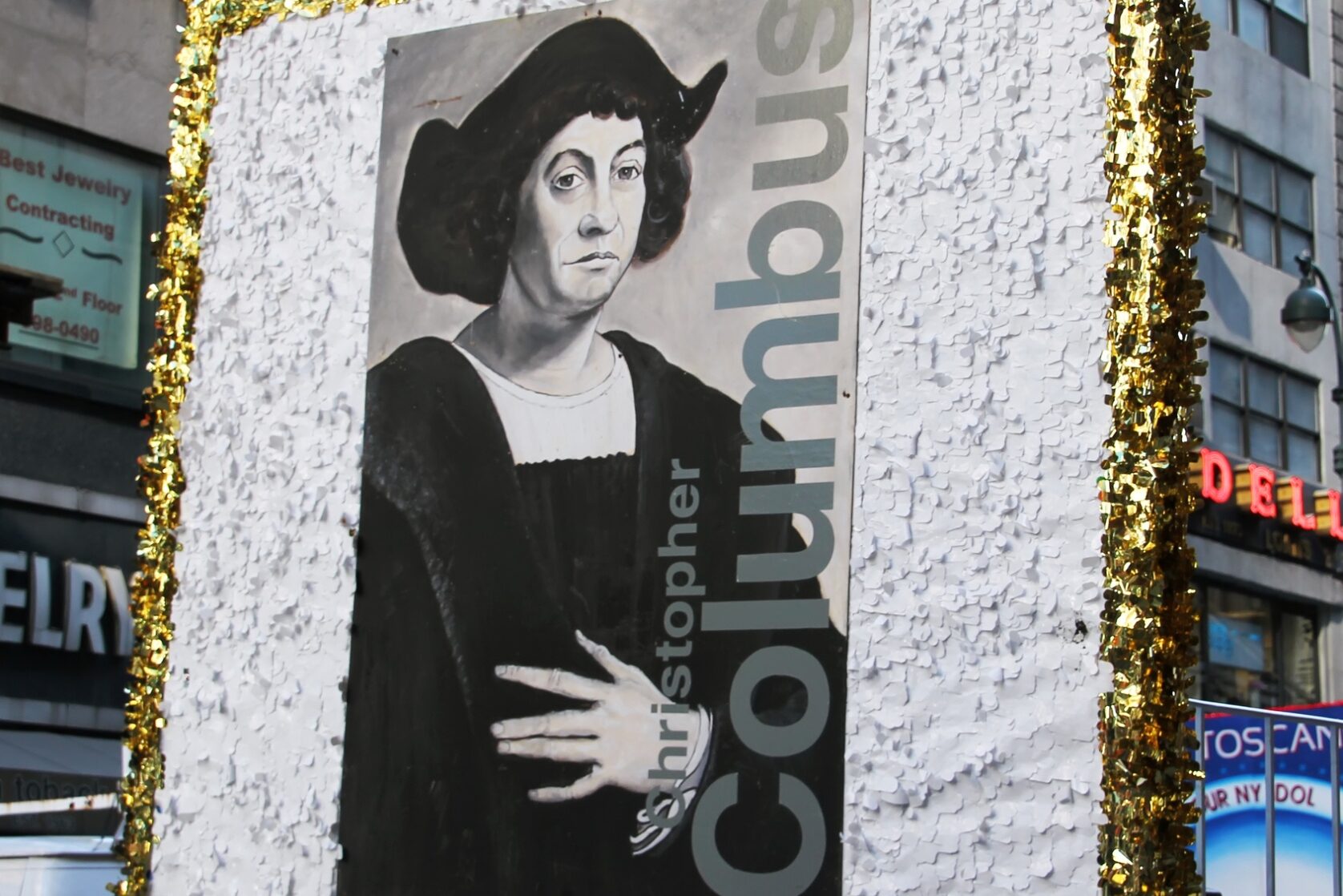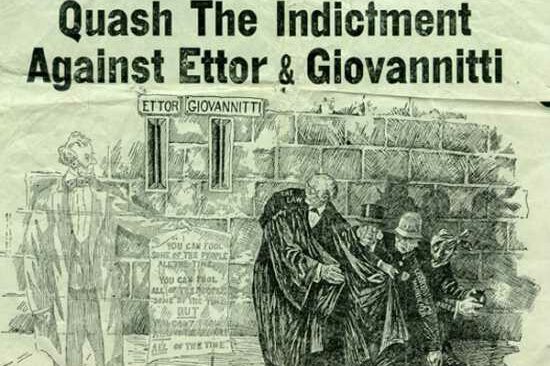Dear Readers,
The 126th Tournament of Roses Parade, held on the first day of each New Year in Pasadena, California, had its theme this year “Inspiring Stories”. Featured was a “riderless horse” that represented Grand Marshall Louis Zamperini, a World War II hero and former Olympian, who died in July 2014, at the age of 97. Zamperini’s son Luke, daughter Cynthia and grandchildren rode in a car in his place.
Louis Zamperini is the subject of a best-selling book by Laura Hillenbrand and the movie “Unbroken”, directed by Angelina Jolie, now in theaters. I usually stay away from war movies and shoot-em-ups, because I already see more of that stuff on the Evening News than I’d like, but since “Unbroken” had an “Italian Connection” I ventured into my local movie house.
Angelina Jolie did an admirable job directing this movie but for someone like me it was difficult watching a “nice Italian boy” and an Olympic distance runner at that be so “maltrattato” by his Japanese captors, but unfortunately that is the reality of war. Angelina Jolie met and bonded with “Louie” before he passed away and presented his life story in the most tasteful manner possible.
Louis Zamperini, Olympic distance runner and World War II veteran survived 47 days on a raft in the Pacific Ocean after his Bomber crashed. He endured two years in a Japanese prison camp and died at age 97 after suffering from pneumonia. The book upon which the movie “Unbroken” was based was a World War II story of Survival, Resilience and Redemption.
Zamperini, a high school and University of Southern California track star, was known as the Torrance Tornado and competed in the 5,000-meter run at the 1936 Berlin Olympics. He finished eighth but caught attention by running the final lap in 56 seconds.
In World War II, he was a bombardier on a U.S. Army Air Forces bomber that crashed in the Pacific Ocean during a reconnaissance mission. He and one of the other surviving crew members drifted for 47 days on a raft in shark-infested waters before being captured by Japanese forces. He spent more than two years as a prisoner of war, surviving torture.
Mr. Zamperini became a Born-Again Christian in 1949 after attending a Los Angeles crusade led by evangelist Billy Graham. He eventually travelled as an inspirational speaker preaching the Power of Forgiveness.
Zamperini, a five-time Olympic torch-bearer, ran a leg in the torch relay for the 1988 Winter Olympics in Nagano. During his visit, he attempted to meet with his most brutal wartime tormentor, Mutsuhiro Watanabe. But Watanabe, who escaped prosecution as a war criminal, refused to see him.
Mr. Zamperini was born Jan. 26, 1917, in the western New York city of Olean.
He was just 2 years old when his parents moved the family to Torrance in Southern California, where he lived for the rest of his life.
His wife, Cynthia Applewhite, whom he married in 1946, died in 2001.
***
Frank Capra, born near Palermo (Bisacquino), Sicily, one of 7 children, in 1897, came to America (Los Angeles, California) at the age of six with his family. When “Inspiring Stories” are the topic, Capra’s name and movie titles like It’s a Wonderful Life (during the Christmas season) immediately come to mind.
In the Thirties and Forties the movie-going public usually knew well what to expect in a Capra picture; a message for one thing: an idealist beset by cynics, crass materialists or just plain rascals. The idealist hero might be temporarily confused by the machinations of some fast talkers, but in the end, the audience’s faith in mankind was restored and the wiser-than most hero vindicated.
Frank Capra has many memorable films to his credit, including “You Can’t Take It With You” and “It Happened One Night”, which stomped off with five Oscars in 1934.
There has long been in existence a derogatory term, “Capra-corn”, a put down of Capra’s faith in the power of “the little man” (Mr. Deeds, Mr. Smith) to rise up and overthrow evil, but it didn’t bother him at all. He once said that “a class at UCLA spent a whole semester devoted to my films. And I want to tell you my films were not always the critics’ favorites, but they were the people’s favorites. I came into that class during the last five minutes of It’s a Wonderful Life and I was introduced, ‘Ladies and gentlemen, Frank Capra’, and I got a five-minute ovation.”
Born in Sicily, Capra came to America at the age of six. He was educated at California Tech and graduated with an engineering degree. He entered motion pictures in 1921 directing Screen Snap Shots and was a gag man for the Our Gang comedies.
He was broken in under Mack Sennett in the 1920s and reached his pinnacle at Columbia Pictures under alleged tyrant Harry Cohn (crude as he was, he did have a fierce passion for his company, and for films). Three-time president of the Screen Directors Guild and four-time president of the Academy, the “Sicilian Sentimentalist” packed chuckles and a message in dozens of classic films saying “I wanted to glorify the average man, not the guy at the top, not the politician, not the banker, just the ordinary guy whose strength and whose survivability I admire”.
Frank Capra died in 1991 in La Quinta, California. His films may well be the best expression of the “American Dream” out Italian American forefathers so seriously pursued.
***
Mario Cuomo, who died January 1st of this New Year 2015, is another example of an Italian American immigrant’s “American Dream” come true. Mario Matthew Cuomo was born in Queens on June 15, 1932, the fourth child of Andrea and Immacolata Cuomo. His parents, penniless and unable to speak English, had come to the United States from the province of Salerno, south of Naples.
Mr. Cuomo grew up in the Queens neighborhood of South Jamaica, where the family had moved and opened a grocery store.
Like many other little Italian-American kids born in the U.S.A., to parents who did not speak English, Mario spoke only Italian until he entered grade school. That is why Mario’s oratorical skills were all the more amazing and inspiring.
Mario Cuomo, the former three-term Governor of N.Y., was the first Italian-American to be elected Governor of New York and served longer that any other of his 51 predecessors except Nelson Rockefeller.
Mario Cuomo grew up in New York City at the heights of the Depression. From the N.Y. public schools, he went on to graduate summa cum laude from St. John’s University in 1953 and finished at the top of his class at St. John’s School of Law in 1956.
After leaving office he continued to practice law and work for public policy through lectures, media appearances and his books, Reason to Believe, The New York Idea, An Experiment in Democracy, published in 1993, tells the story of the Empire State, Lincoln on Democracy, a 1990 volume Cuomo co-edited, is a compilation of speeches, writings and conversations of Abraham Lincoln that has been translated into Hebrew, Polish and Japanese.
Mario was a tenacious debater and a spellbinding speaker. He delivered the key-note address at the 1984 Democratic National Convention in San Francisco, the year Geraldine Ferraro was his party nominee, along with former Vice President Walter Mondale. Seizing on Reagan’s description of America as a “shining city on hill”, he portrayed the President as unaware of impoverished Americans.
“Mr. President,” he said, “you ought to know that this nation is more a ‘tale of two cities’ than it is just a ‘shining city on a hill’. “
Mario Cuomo was the husband of Matilda Raffo Cuomo, a woman of great warmth, and the father of Andrew Cuomo, who was inaugurated for a second term as Governor of New York just hours before his father, Mario, died at home in Manhattan from heart failure at age 82.
***































